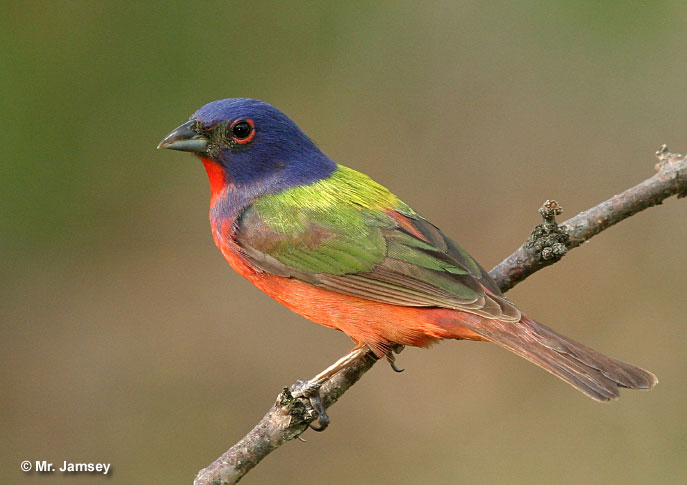Painted Bunting is one of the most colorful birds in North America and the most colorful songbird.
The looks of these birds earned them fame ever since the first European settlers arrived – but have also endangered their survival due to caging.
On this page
Meet The Painted Buntings
Painted Buntings have a typical compact, rounded bunting body plan with finch-like bills. It is relatively small for a finch – measuring 12 to 13 cm (4.7 to 5.1 in.) in length and weighing 13 to 19 grams.
There are two distinct populations or subspecies – the eastern one (Passerina ciris ciris) and the western one (Passerina ciris pallidior).
Breeding Male
Males display stunning colors – the backs are golden-green, the heads are blue, and the underparts are red. A true RGB display!
However, as you’ll shortly learn, juvenile males don’t have the same color diversity.
Also, the male has more musical singing abilities than the female (more on that below), with a distinct warbling song.
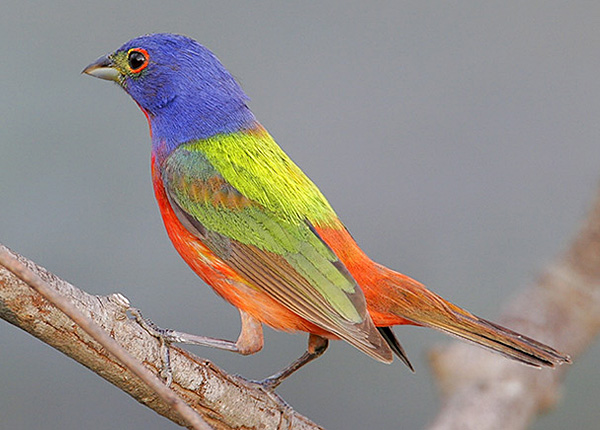
Photograph © Greg Lavaty.
Female
Females are much less colorful compared to males but are still quite vivid. The upper part of the body, head included, are green, while the underparts have a more yellow hue; breasts and flanks are olive. The eyering is characteristically pale.
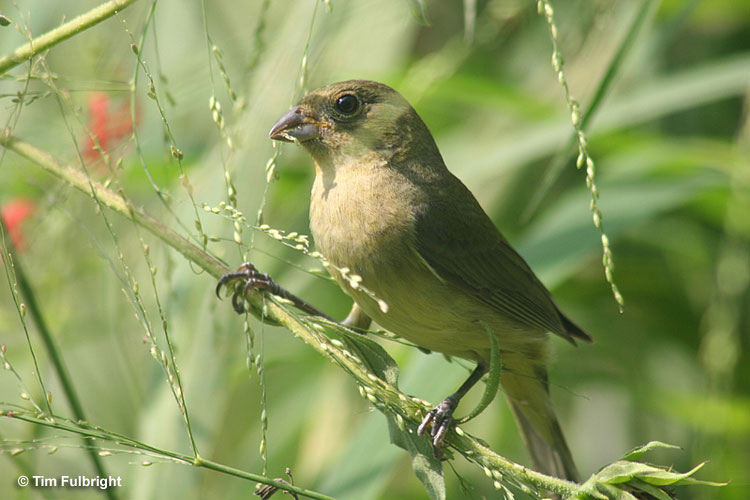
Juvenile
Both male and female juveniles look similar to adult females and are often mistaken for them. Still, young birds have somewhat duller underparts with faint streaks.
In their first year, males are brighter colored than juvenile females. Also, they can have a few od blue and red feathers. In the fall of the second year, they’ll molt into flashy adult male colors.
First-year females look like adult females but have browner upperparts and yellow underparts – their overall appearance is duller.
Wing shape
Wings are medium-sized, broad, and pointed – the shape is typical for buntings. The average wingspan is 20-22 cm.
This wing shape allows Painted Buntings to do short flights using rapid beats. While this may sound unexciting, males can perform various flight tricks. Examples are “butterfly flight,” – a slow flight with lagging, deep wing beats, and “moth flight,” – a slow descending flight with wing-quivering.
Vocalization of Painted Bunting
These birds vocalize with clear, uneven, and rather loud songs.
The calls are sharp and metallic-sounding.
The male’s song is more musical – he’ll use a charming melodic mishmash to attract a mate or when defending his territory.
Range (and seasonal changes)
Painted Bunting is found in the Nearctic and Neotropical realms, including North America, Central America, and the Caribbean.
The species is migratory. They leave their breeding grounds and travel southwards in the winter, with a possible exception of South Louisiana and Southeast Texas populations that may overwinter locally; however, their breeding and wintering areas are still different.
The western population spends their winters in Mexico and Central America. The eastern one gravitates towards the southern parts of Florida, and also Cuba and the Bahamas.
Habitat
Painted Buntings live in shrubby habitats, riparian thickets, open woodlands (with enough lower vegetation), and maritime forest edges. This landscape allows them to stay as inconspicuous as possible.
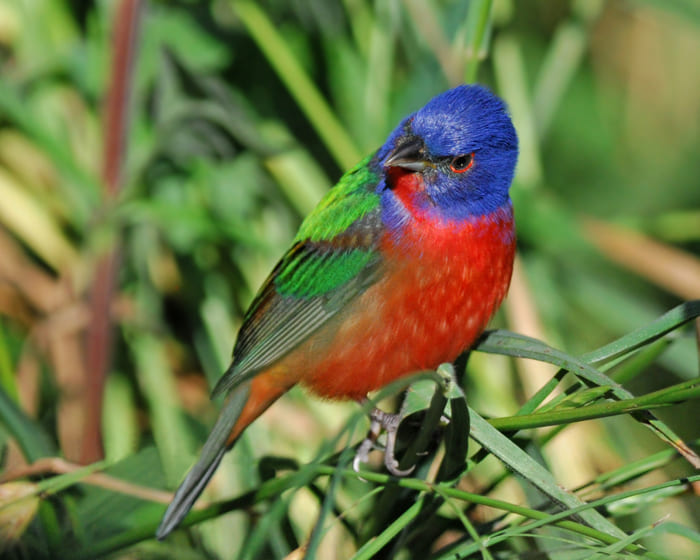
Within these habitats, they will pick a bush or a small tree and build their nest at a height between 0.5 and 3 meters (2 meters on average).
Behavior
Painted Bunting is a shy bird. Despite the male’s flaming coloration, they are hard to observe out of the breeding season because they tend to hide and lurk low in the shrubs of forest edges. Accordingly, it forages for seeds on the ground, under shrubs, and in weedy covers.
Breeding and Nesting
Painted Bunting breeding season lasts from late March to early August, peaking from mid-May to mid-July.
The breeding ground is the same type as the preferred habitat – dense shrubs leaning on woodland edges or thick grass areas.
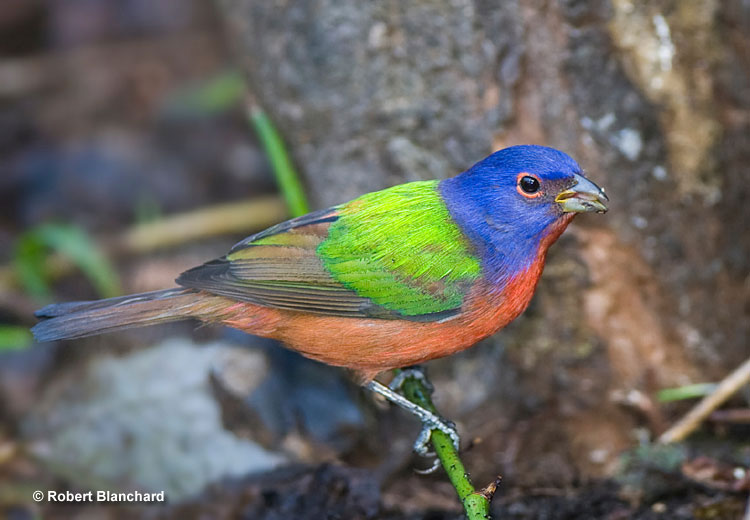
Males are territorial, and their claimed territories span up to several acres. They zealously defend their territory by singing and displays. But it doesn’t end with a mere show-off – any competing intruder will be fought off by wing strikes, grappling, and pecking. Rarely the fights end in the death of the weaker party.
After the female has picked her mate, she’ll begin building a cup-shaped nest. The materials used in nest building are grass stems, bark strips, and small tender roots. The inside is lined with softer materials – moss and animal hair.
Painted Buntings can have up to three broods per year, with 3-4 eggs in each – translating to up to 12 chicks per year. Besides nest building, the female also feeds the chicks, which fledge (leave the nest) when they are between 12 and 14 days old.
Diet
The diet consists mainly of seeds, grasses, and weeds, with the occasional addition of berries and fruits.
This basic plant-dominated diet is supplemented with animal protein during the breeding season.
The prey consists of insects and other invertebrates – caterpillars, flies, beetles, grasshoppers, spiders, and snails. Chicks are fed this high-protein diet primarily.
Painted Buntings commonly forage close to the ground – either on the floor itself or on the low branches of bushy vegetation. They tend to keep a low profile in any case.
Status
Unfortunately, this species has been in decline for several decades. It is impacted by hunting and caging for the pet trade in the southern (tropical) wintering grounds, as well as by frequent nest parasitizing by Brown-headed and Bronzed cowbirds (Molothrus ater and M. aeneus, respectively).
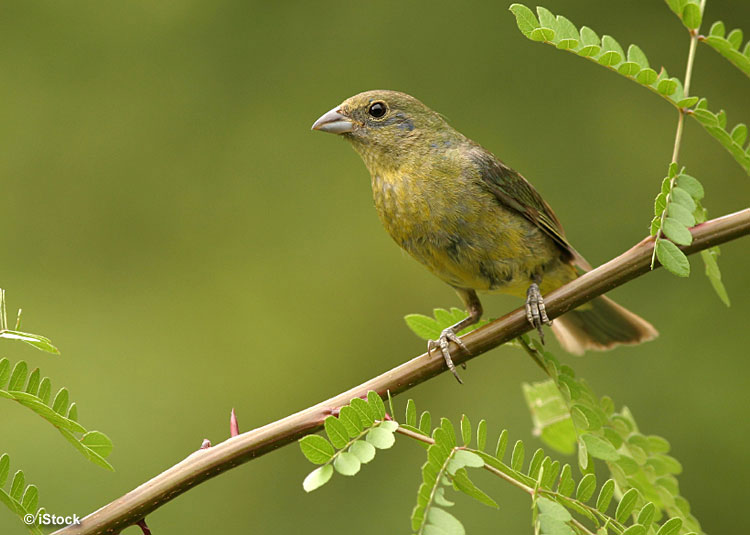
As with most other declining animal species, Painted Buntings are also threatened by habitat loss. This is particularly true for the eastern population that relies on coastal habitats often targeted for luxury real-estate development.
It is estimated that more than half of the population has been lost in the last 100 years, with the eastern population fairing slightly better than the western.
Fun Facts of Painted Bunting
- The oldest Painted Bunting recorded in the wild via banding studies was at least 12 years old. It was caught in Florida.
- Gene studies say that eastern and western populations of this species haven’t interbred for 26,000 years.
- Alternative names for Painted Buntings include Mexican canary, painted finch, pope, or nonpareil, with the last one meaning “unrivaled!”
- These jewels are more likely to come to your birdfeeder if you have a yard with low, dense plant cover.
- If you truly love these birds, never buy them as pets! Illegal caging and trading are still happening, especially in the tropics; it’s one factor endangering this lovely species’ future.
Similar Species
Painted Buntings are easy to identify, but there are still a few birds they can be confused with.
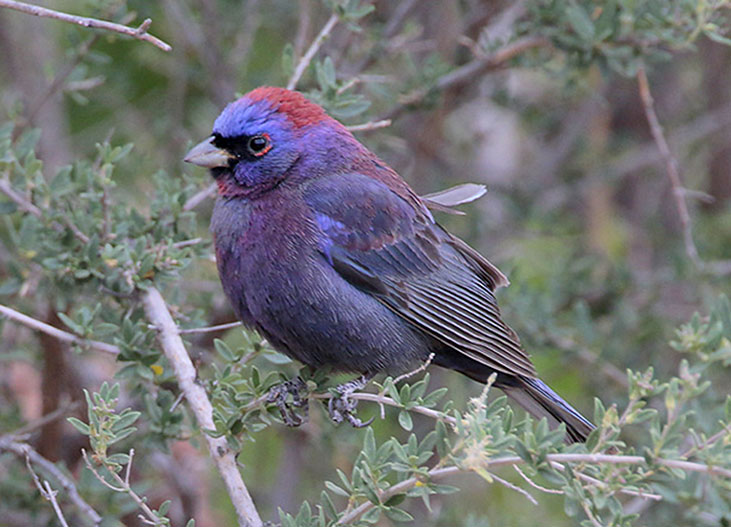
Varied Bunting
Compared to Painted Buntings, Varied Buntings have more laid-back plumage.
They are similar in size, Varied Buntings can be a tiny bit bigger in size.
There is some overlapping of ranges, but Varied Buntings are not too common in the United States.
Frequently Asked Questions about Painted Bunting
What is the population of Painted Buntings?
The total breeding population of painted buntings is estimated at 14 million individuals. However, a century ago, there was double that much – like many North American birds, this species is facing a decline.
What does it mean to see a Painted Bunting?
This species doesn’t have a distinct place in mythology, ancient spirituality, or folk superstition. However, Buntings in general are considered a symbol of good fortune, joy, bravery, and openness (e.g., “when you sing from your heart”).
Since these birds are difficult to spot, you should definitely consider yourself fortunate if you see one. According to some authors, in Cuba, seeing a painted bunting is regarded as a small miracle and analogized with miraculous experiences such as seeing Virgin Mary – as suggested by the bird’s local name.
Are Painted Buntings aggressive?
These are small, shy, and fearful creatures that will never act aggressively toward humans, other mammals, or birds.
However, during the breeding season, males can be ferociously aggressive toward each other. The intrusions into territory often result in physical fights that can even be fatal to one of the birds!

